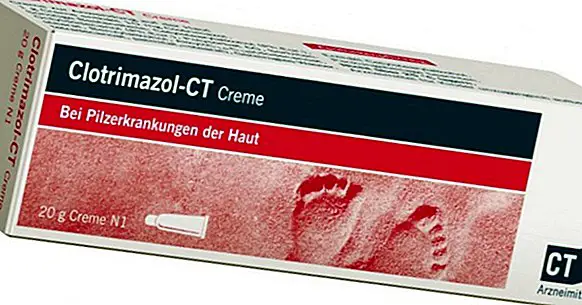What is clotrimazole for? Uses and effects for health
Among the most commonly used medications to treat infections is clotrimazole, better known as "Canesten" . Clotrimazole is very popular in the management of infections such as candidiasis and ringworm.
In this article we will analyze the characteristics and utilities of clotrimazole , as well as the precautions that should be taken if we plan to take this medication. In any case, always keep in mind that this product should only be used if it is indicated by a doctor who has personally examined what happens in the body.
- Maybe you're interested: Blasto-Stimulin: what is it and how is this medicine used?
What is clotrimazole?
Clotrimazole is a medicine with antifungal or antifungal action, that is, causes the death of fungi that develop in some tissues of the body. Therefore, it is used to treat infections caused by these organisms.
It is usually marketed as Canesten, although it can also be found as Fungidermo, Clotrimazol Canesmed, Clotrimin or Canespie, among other names. There are also Clotrasone and Lotriderm, drugs that combine the antifungal action of clotrimazole with the anti-inflammatory effects of betamethasone.
Clotrimazole kills fungi by attaching to their cell walls and preventing them from synthesizing ergosterol , a compound similar to the necessary cholesterol that fungi need so that the membranes of their cells are maintained.
In any case, as we will see, the possible side effects make clotrimazole a product whose use is risky, so its consumption must be indicated and supervised by a specialist.
What is it for?
Medicines with clotrimazole are used to treat fungal infections of various types. Depending on the location of the infection, we will use one or another of the available formats.
Probably the best-known application of Canesten is the treatment of candidiasis or yeast infections , especially those that occur in the vagina. Studies say that three out of four women will suffer vaginal candidiasis during their lifetime, and almost half will have more than one episode. It also serves to treat candidiasis balanitis, a similar infection that affects the glans of males. Thus, these are characteristic conditions of sensitive tissues or mucosa.
Also throat lozenges with clotrimazole are used to prevent oral candidiasis in people with neutropenia, a disease characterized by the low blood concentration of neutrophils, the most common type of white blood cells, necessary for defense against infection.
The Canesten is also the treatment of choice for dermatophytosis or ringworm , a group of fungal infections of the skin. Among the types of dermatophytosis for which this medication is used are athlete's foot and body, inguinal and cruris tinea.
Another application of clotrimazole is the management of sickle cell anemia or sickle cell disease. In this blood disease red blood cells become stiff and take the shape of sickle or half moon, increasing the risk of infections and heart attack and greatly shortening life expectancy.
How is it administered?
Clotrimazole is sold in several formats. Some of the best known are in cream, in ovules, in drops for the ears and as pills for the throat. Each of these variants of clotrimazole is used to treat certain infections, and many of them have their own brand name, although "Canesten" is shared by various medications.
If applied topically to treat skin infections, Canesten is used once in the morning and once in the evening for a period of between two weeks and two months. The throat lozenges are taken five times a day for two weeks.
In case of vaginal infection clotrimazole is applied only once a day. The dose of 100 mg is administered for six days, while if it is 500 mg with a single use is sufficient. It is recommended to use it before sleeping, since the best way to ensure that the medicine takes effect is to lie down with your legs bent for a while.
Since there are many drugs with clotrimazole and each one has its peculiarities in terms of administration, it is advisable to consult the leaflet carefully. It is also highly recommended to ask for medical opinion, especially if it is the first time clotrimazole is used.
Side effects and contraindications
Some of the side effects of clotrimazole vary depending on the application format we use; however, many of these reactions are related to dermatological symptoms as inflammation, redness, irritation, itching, burning , peeling, rash or blisters on the skin.
Allergic reactions can include fever, breathing difficulties (dyspnea), itching throughout the body (pruritus) or vaginal bleeding, if used in this way. Oral pills sometimes cause functional deficits in the liver, upset stomach and vomiting.
Sometimes it can also cause pain in the part of the body in which it is applied. If it occurs, this pain seems to be especially intense in cases of ear infection.
It does not appear that Canesten carries risks if used during pregnancy, although it is recommended that it be applied directly with the finger in case of vaginal infections that take place during the last weeks of pregnancy to minimize the likelihood that it will affect the baby. It is preferable to avoid clotrimazole consumption during lactation.
It is especially important to consult the doctor before using Canesten if we have diabetes, liver problems or immune diseases such as HIV, as well as if we are using another medication, especially antibiotics. It is not recommended to combine clotrimazole with alcohol.



















